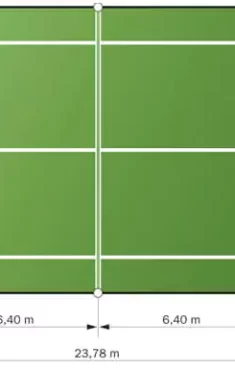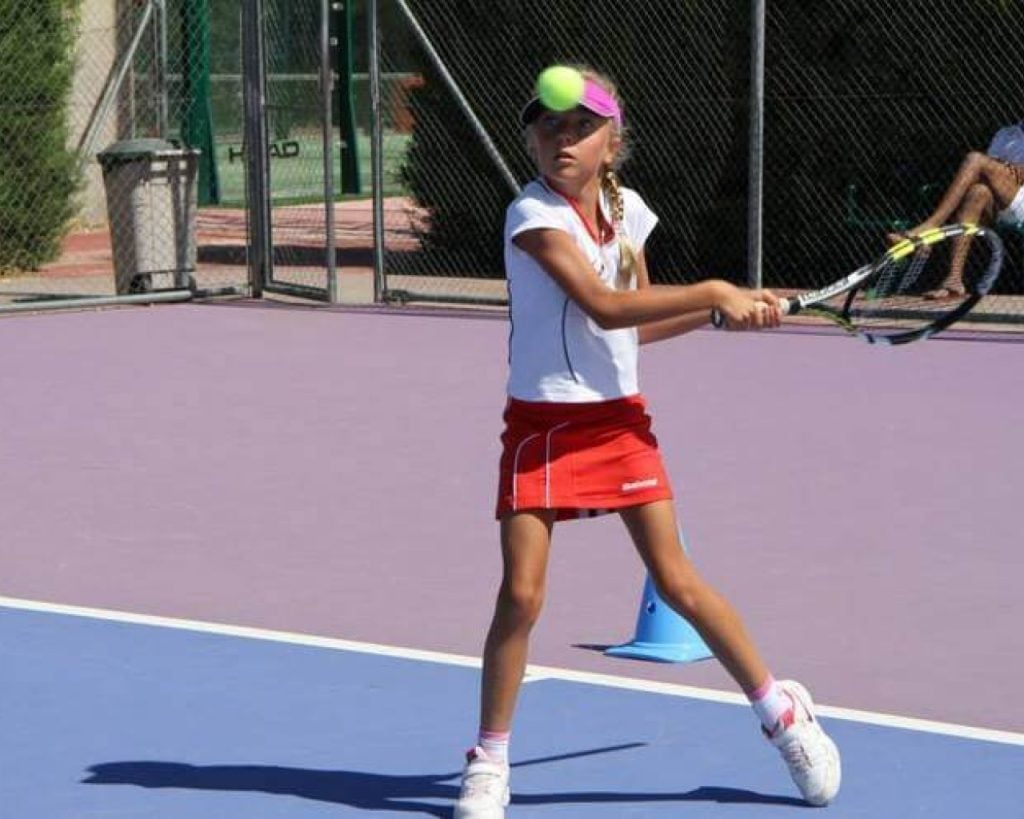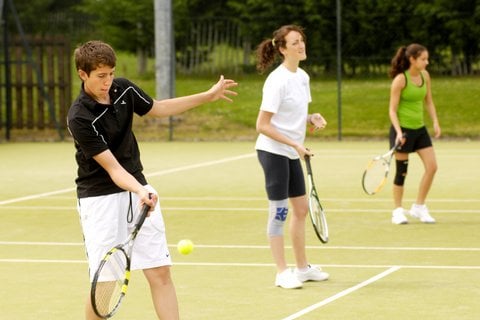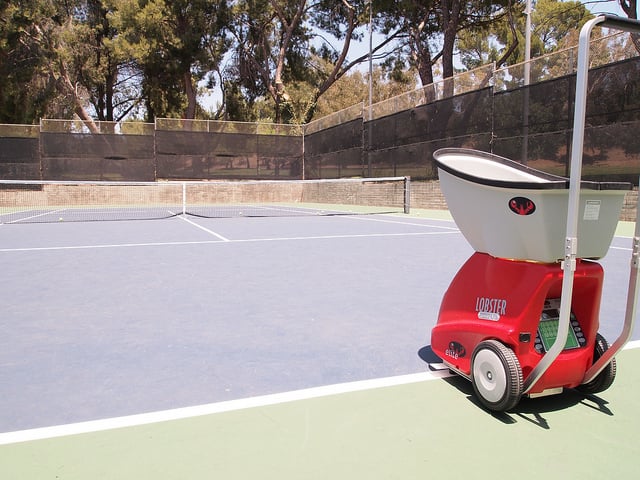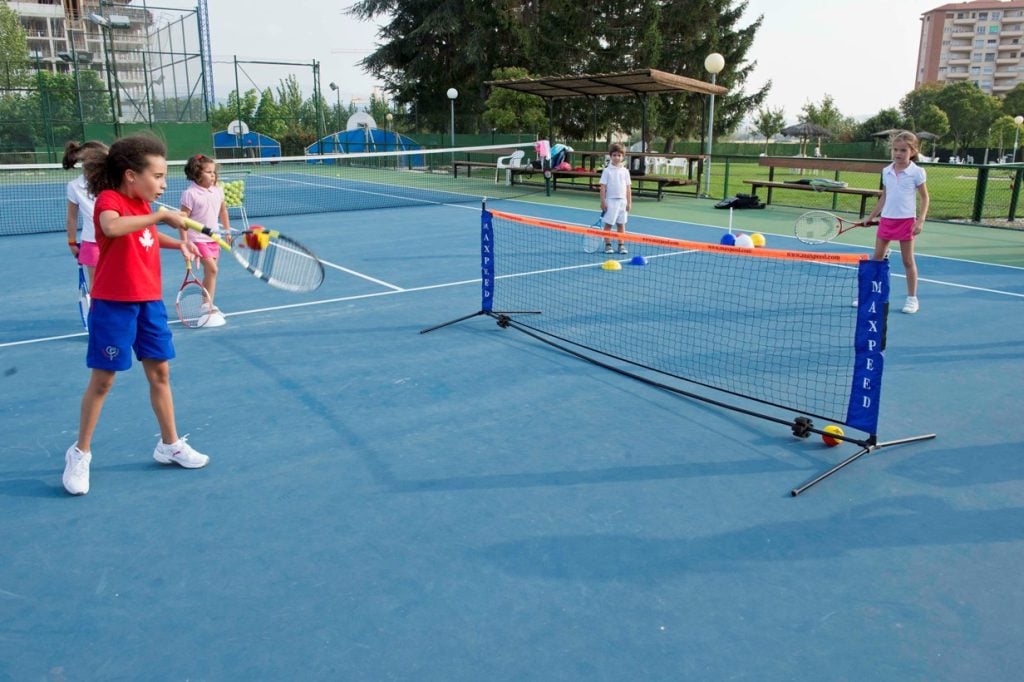The surface of the tennis courts is one of the most important variables in this sport, as it alters the conditions and the development of the matches in many factors.
Indeed, even professional tennis players find it difficult to adapt and modify their game depending on the surface on which they are going to play.
It is not by chance that Rafa Nadal is the king of clay courts, making history as the player with the most Roland Garros wins in history.
This is because the Mallorcan tennis player manages to get the most out of the clay court conditions to tie up his opponents with his sharp defense, changes of pace and intense attacks.
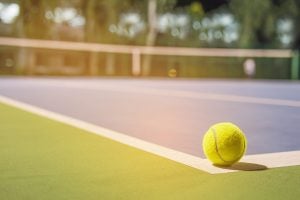
Image of jcomp
Therefore, it is essential that every player who is taking his first steps in this sport has very clear how the surface can change his game and how to take advantage of each of the characteristics to exploit his virtues and uncover the weaknesses of his opponent.
What types of tennis surfaces exist?
First of all, and before going into the surfaces, let’s review the measurements that a tennis court and the net should have.
The tennis court should be 23.78 meters long and 10.97 meters wide; with a space at the back of 3.65 meters, which should be extended to 4 meters in international tournaments; and a lateral space of 6.40 meters or 8 meters in the case of an international tournament.
As for the net, it must have a height of 0.914 meters at the center and 1.07 meters at the posts that support it; while it is suspended by a metal cable of 0.8 meters in diameter covered by the white band on which the ball commonly hits and generates unpredictable situations.
Finally, the net must have a length of 8.23 meters for singles matches and 10.97 meters for doubles matches.
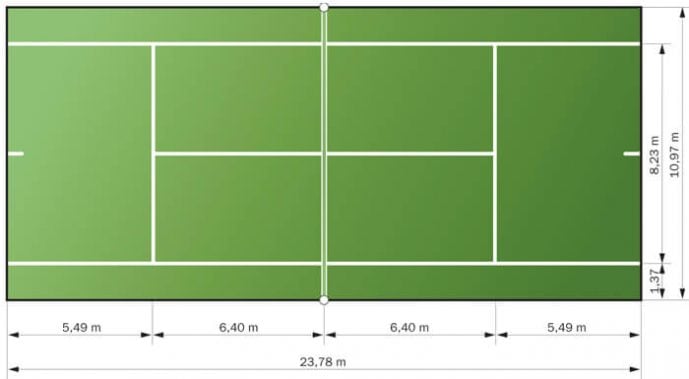
Photo: todo-olimpiadas.com
Now let’s get down to the surfaces
When it comes to professional tennis, there are a total of three surfaces on which an ATP or WTA match can be played: hard court or cement, clay and grass.
Of course, each of them has its own characteristics and are even more popular in certain regions of the world than the others, so we’ll tell you all about them one by one.
Hard or cement court
These are the most popular tennis courts for amateurs, as they are the easiest to build and maintain and have the most durable material.
Clubs and tennis academies opt for this surface as it provides the most consistent bounces as it is completely flat.
Two Grand Slams are played on this surface every year: the Australian Open and the US Open.
Cement courts are the surface par excellence in North America, being home to dozens of ATP tournaments on this type of court.
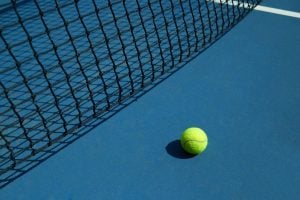
Image of serhii_bobyk
In addition, it is a court that allows for a much faster and more attacking game, so it could be more attractive from an entertainment point of view.
Thanks to the fact that the maintenance of concrete courts is much easier and cheaper than the previous ones, almost all camps have quite a few of them in their facilities. The IMG academy, the Nike camp in England and the Exsportise tennis camp have mainly concrete courts, where they hold matches and training sessions.
How can I play better on hard court?
The players who get the most out of the hard court are those who have good power in their shots and do not play very long sequences of points.
The bounce of the ball on this surface is fast and high, which means that you can hit game-winning shots from any part of the court more easily and with a higher percentage of success.
Also, take advantage of the shot angles and always try to hit the ball when it is at its highest point, this way you will have more openness and make your shots more difficult to reach and the opposing player suffers more when returning them.
And of course, make your serve your best ally. A player with a good serve will considerably increase his percentage of points won with his serve on this surface.
The serve + volley combination can be extremely winning if you can close out points close to the net.
On the other hand, make sure you have shoes with good cushioning so that your ankles and knees don’t suffer too much.
Being a tough court, you need your shoes to have a hard sole that can give you the stability to change direction quickly and settle down when you hit your shots.
So now you know, try to have an aggressive game and rely on the power of your shots to be dominant on every point, as defensive play is not as effective on this surface.
Top hard-court stars
The undisputed master of the concrete court is Roger Federer, who is the top winner on this surface with more than 780 victories.
The hard court allowed Federer to take advantage of the precision of his forehand, the power of his backhand and the lethality of his volleys.
On the other hand, another star we should mention is Novak Djokovic, the king of Australia who has left his mark on history for the versatility of his game in attack and defense, winning more than 600 victories.
And to go a little more backwards, we must mention Jimmy Connors and Andre Agassi, two American geniuses who kept the North American country at the top of the tennis world.
Special mention should be made of Andy Roddick, who delighted fans with his absolutely spectacular serve.
Roger Federer’s Top 10 Shots from the US Open!
Clay Court
Clay is a difficult surface to find outside the professional field, although it is very popular in Spain; and as a proof we have the iconic Madrid Masters.
Moreover, Spain is always represented by players who perform very well on clay, such as the legend Rafa Nadal, Juan Carlos Ferrero or Carlos Moya, just to mention a few.
Of course, the most popular tournament in the world on clay is the Roland Garros, which takes place in Paris, France.
However, it is not a type of surface that is easily accessible to everyone, as it is expensive to maintain.
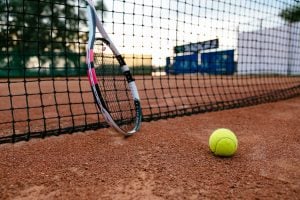
Image of freepic.diller
In addition to Spain, clay court tournaments are also often seen in South American countries such as Chile, Argentina and Brazil, not to mention other European countries such as Italy, home of the Monte Carlo and Rome Open.
In most of our camps in Spain you will be able to train on clay courts, the Juan Carlos Ferrero Tennis Academy has clay courts for the students. The Mouratoglou Academy in France, one of the best in Europe, also has clay courts.
What should I take advantage of on clay?
Clay is the surface par excellence for defensive and long-distance players, those who do not base their game on power, but on their physical condition and leg speed.
To win a match on clay it is not enough to be faster than your opponent, you must also be smarter and have good physical endurance.
A good strategy is to constantly change pace with your strokes and vary their effects, relying on topspin to try to get your opponent out of the court.
Slice shots are also a great option to make the bounce of the ball on the ground even more irregular, forcing the opponent to hit the ball as close to the ground as possible.
In addition, the dropshot becomes a lethal weapon in this type of match as it is favoured by the low bounce of the ball and the difficulty of getting off to a fast start on this surface.
And of course, you have to learn how to glide on clay to get to the ball faster and change direction without any problems.
For this you will need shoes with a very good grip, as well as hard supports on the sides to withstand the friction of the court.
Their soles should have grooves that allow you to remove any dirt debris that might get in, as it can hinder your traction.
And, of course, make sure you tie the laces of your shoes properly because you’ll need a lot of stability in your ankles to support and strike.
Clay court stars
As we have already mentioned, Rafael Nadal‘s numbers speak for themselves and make him the only king of clay with 14 Roland Garros titles to his name.
Watching Nadal on clay is art, the way he glides and the energy he puts into each point is a reflection of his intensity when playing, not giving any point for lost and taking advantage of the slightest mistake of the rival.
In terms of victories, the Argentinean Guillermo Vilas is the top winner on this surface with 681 victories, making him an icon of the sport in the country.
Mention should also be made of Manuel Orantes, who reached the final of Roland Garros and Monte Carlo, as well as being crowned in Rome and Hamburg, orchestrating a record of 569 victories.
Grass
Possibly the most difficult surface to find anywhere in the world due to all the care that it must have to be in optimal conditions.
Having Wimbledon as the main exponent, grass tennis courts also give rise to a very fast game, although with somewhat irregular bounces depending on the state of the court.
Grass courts are most often found in the United Kingdom, as they are also affected by the climatic factor in their maintenance.
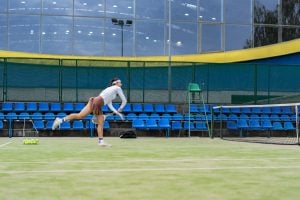
Image of alexeyzhilkin
In addition, the rubbing of the soles of the shoes also wears the court, changing the bounce and the grip of the shoes on the surface.
Because of all these cons, grass has become a classic surface of choice for tournaments such as Queens, preparatory to Wimbledon, but is really difficult to find in any other context.
Some tennis camps have 1 or 2 grass courts for training, but you won’t often find it because the maintenance is complicated.
What do I need to do to play better on lawn tennis courts?
Lawn tennis courts are the cradle of the traditional serve and volley game, as the speed of the ball’s bite allows you to finish points quickly.
Your serve will be a lethal weapon if you can vary it enough, as you not only depend on the power of your first serve, but you can also play with the bounce of the surface to surprise.
Just like on clay, make the most of your sliced backhand and drop shots, this will make your opponent have to concentrate much more on the bounce of the ball before impact and will not allow him to plan and execute his moves well.
As for the shoes, you need them to have good grip to be able to have traction and change direction quickly.
However, the sole of the shoe needs to be flat so that it doesn’t damage the grass as you walk on it.
At the end of the day, though, no matter the shoe, the surface always gets damaged with use.
This is why this surface is only found in top-level professional academies in Europe and as a stage for international tournaments.
Tennis stars on grass
And we return again to Roger Federer, the greatest winner of Wimbledon tournaments in the history of tennis with 8 in total.
Another star of the grass is the one who follows Federer in the ranking, next to Pete Sampras, we are talking about Novak Djokovic.
The Serbian tennis player has all the odds in his favor to tie Roger’s record next year 2023, as long as his injuries allow him to do so.
On the women’s side, the Williams sisters and Germany’s Steffi Graf dominated the scene during their tenure, setting a legacy for future players.
Indoor track and… Under the sea?
Although this surface was discontinued by the ATP in 2009, some academies and amateur tennis clubs still have these courts.
These courts are synthetic and do not require extreme care, so they are preferred for all conditions. You’ve probably already played a match between colleagues on one of these.
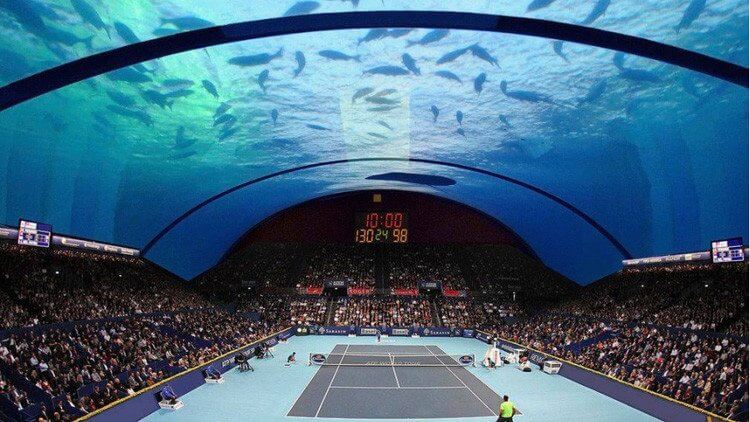
Photo: lopezdoriga.com
And yes, there is a project in Dubai to make tennis courts under the sea.
Presented a few years ago now, the project of Polish architect Kotala Krzysztof consists of creating an underwater tennis complex.
The center will have 7 cement tennis courts under the waters surrounding Dubai, with a capacity of 10,000 spectators.
The total investment of the project is estimated to be around 2 billion dollars, a true Middle Eastern economic brutality.
How do you dry out a tennis court?
Rain is the main enemy of tennis on all surfaces, as it completely alters the game and spoils the competition.
Besides, rain alters the bounce of the ball on the court and must be maintained to dry it and return it to its optimal state; and for this there are several methods.
Of course, the most popular one is drying the court with towels or carpets. The downside is that you will need a lot of hands and effort to cover the entire length of the track.
When there is a lot of water, the organizations rely on a sponge roller or directly on machines.
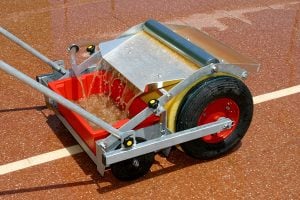
Photo: sportmegias.com
Slamobonis, named after the ice polishers invented by Zamboni, drag and squeeze the surface and squeeze the water out into a tray.
In other, less orthodox methods, some also opt to set fire to certain areas of the court, as happened at the Casablanca Open in Morocco in 2016.
How much does the surface condition the tennis player’s game?
As has been explained throughout this article, tennis surfaces have a huge influence on the tennis player’s game and his or her strategy.
For example, a slow tennis court makes the bounces higher and slower, so the points will be longer and require more physical wear and tear.
This, of course, favors baseliners and defensive players, who prefer clay courts over any other surface.
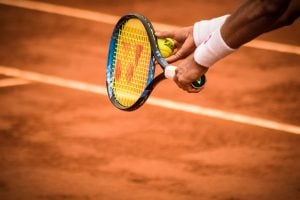
Photo: Gonzalo Facello
On the other hand, a fast, grass court shortens the points and favors players who are more accurate with their shots.
In addition, it forces players to move quickly around the court and have a good knee game to be aware of the height and direction of their opponent’s shots.
And finally, a hard and ultra-fast court provides a very high speed game in which serves, volleys and powerful shots in general gain more importance.
It reduces reaction times between shots and forces you to think much faster about your next move, complicating its execution if you can’t decide quickly.
But don’t worry, if you practice your game properly and link the different tennis strokes to your set, you won’t have so much trouble adapting to the surfaces.
And if you need some advice, remember that we have tennis camps around the world to help you get the most out of your game.

